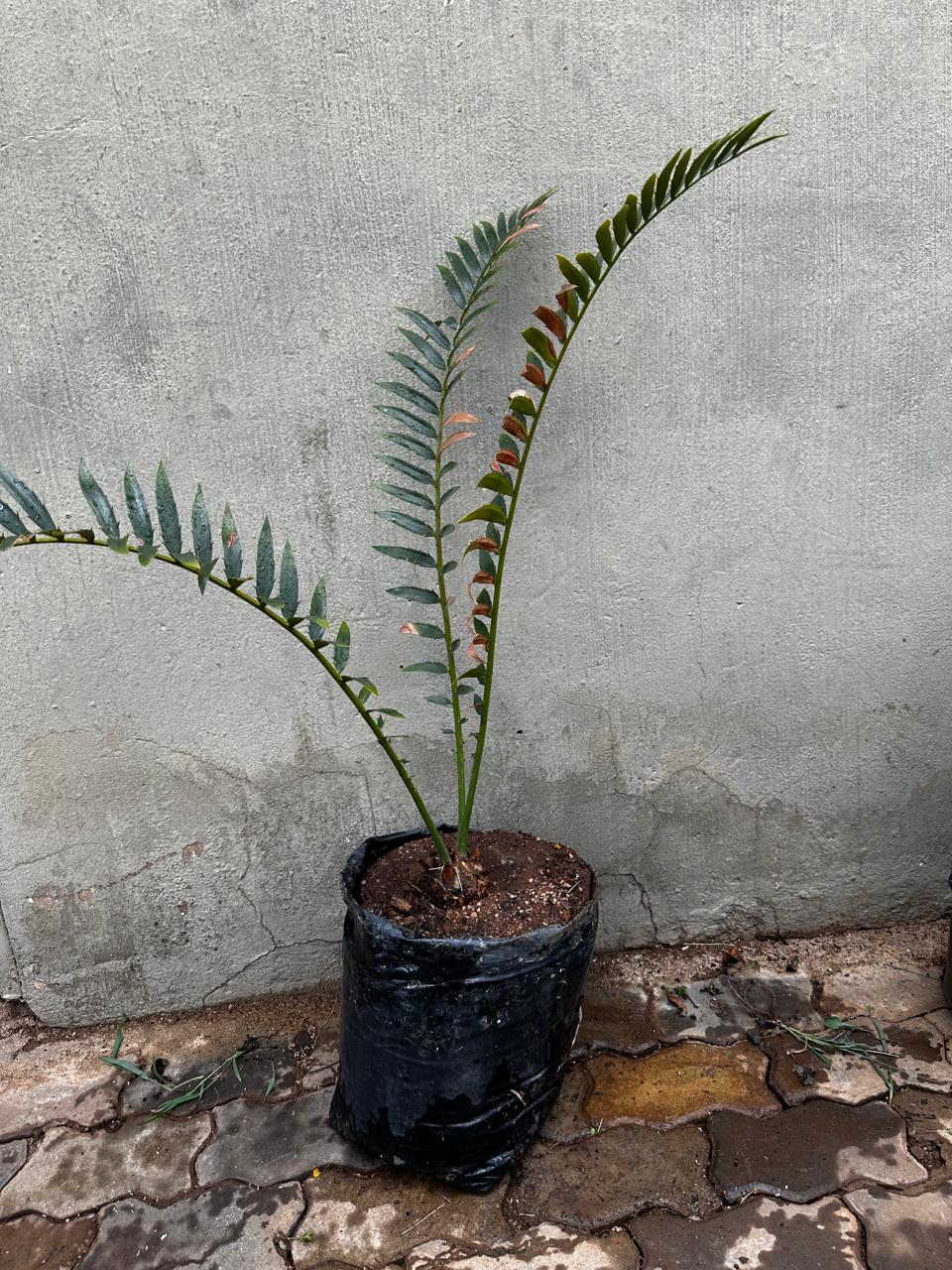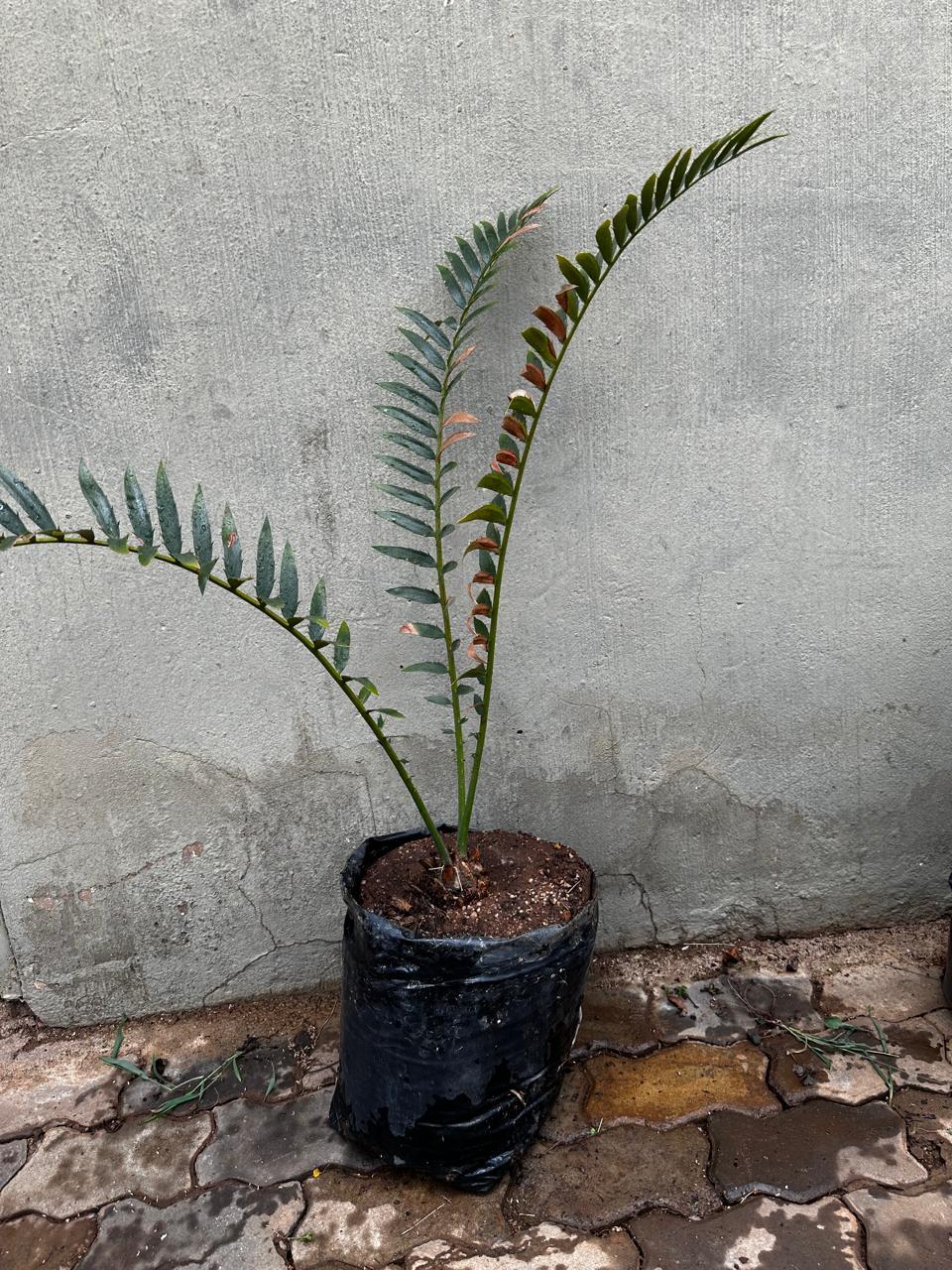







Encephalartos transvenosus
The Encephalartos transvenosus is one of the tallest cycads in southern Africa, with erect stems reaching over 13 meters in height. The Modjadji cycad derives its name from the Balobedu Baga Modjadji people, where it thrives in a protected area in the north-eastern Transvaal.
Cones
Both male and female cones of E. transvenosus are large and impressive. Female cones are golden-yellow and reach a size of 80 cm tall and 30-40 cm in diameter. The cones are covered in golden-brown wool, which becomes more prominent as cones mature or leaves are shed. Each cone scale is smooth and individually measures up to 13-16 kg. The male cones are also golden-yellow, reaching 30-40 cm tall and 13-15 cm in diameter, with shorter, robust structures.
Leaves
The leaves of E. transvenosus are 1-2.5 meters long and arch gracefully, maintaining a dense and leathery texture. The leaves are dark green, with leaflets that form neat, overlapping arrangements along the central rachis. Leaflets are around 30-32 cm in length, each finely serrated. The underside of the leaves is glossy, while the upper side is smooth. In older leaves, the midrib is slightly raised. Young leaves tend to have a fine covering of brown hairs that disappear as they mature.
Stems
The stems of the E. transvenosus grow from the base and can reach up to 13 meters in height. They are characterized by a thick, woody core, supporting dense growth at the crown. New stems may develop from dormant buds, allowing the plant to regenerate if the crown is damaged. Older stems show signs of aging, such as scars from fallen leaves and cones. Stems are also covered with a woolly layer that increases during cone and leaf production, adding additional protection.